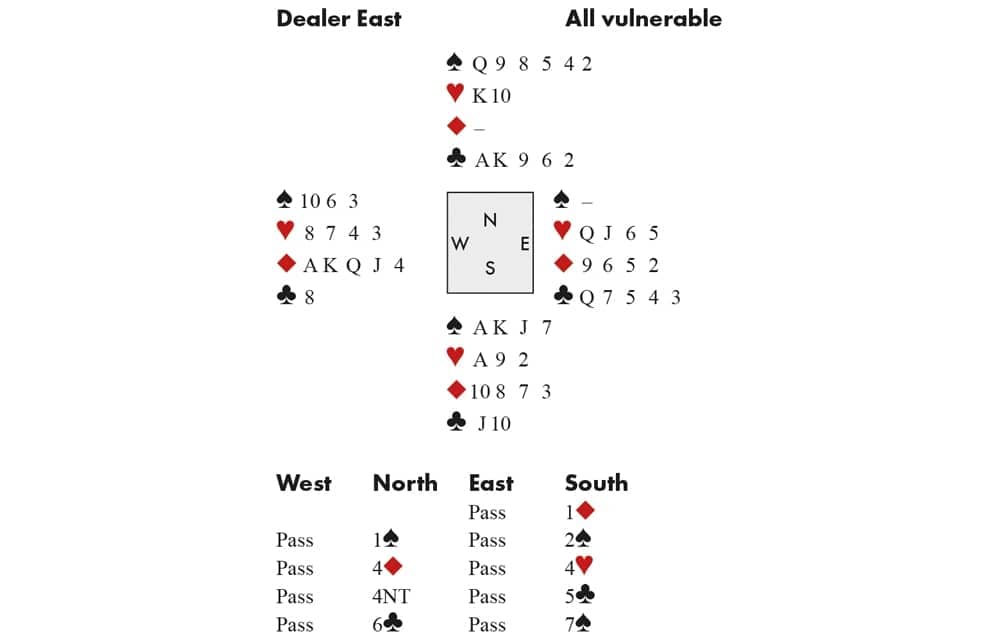The Spring Fours is one of the great events in the English bridge calendar – a five-day knockout attracting many international stars. This year, it was won by Frances Hinden’s team. Superb bridge was played all round – not just by Team Hinden, but all the runners-up, too. As ever, luck played its role – and I couldn’t help feeling sorry for Janet de Botton’s team, who seemed sure of getting through to the semi-finals until a dollop of misfortune fell their way. Going into the final stanza of the quarter-finals, they were 30 points up against Richard Plackett’s team. When you’re that far ahead, with only eight boards to go, you try and play ‘safe’: you can afford some losses, but no big swings or heavy penalties. So what do you do when a vulnerable grand slam beckons: do you go for it, or settle for a small slam? It depends, of course, on how good the odds are – and also on whether you think it will be bid in the other room. Thor-Erik Hoftaniska was faced with that dilemma:
Thor-Erik’s 4◆ showed shortage; South cuebid 4♥, then showed three key-cards. Now came the decisive moment. The grand depended on South’s club holding. Thor-Erik continued with 6♣, a conventional bid asking South whether he had third-round control (a singleton, doubleton or the ♣Q). He did – and jumped to 7♠. It was a fantastic slam – better than 85%. But when clubs broke 5-1 it had to go down. Meanwhile, in the other room, NS stopped in 6♠. That meant a loss of 17 points. De Botton went on to lose the match by three. Bridge is a beautiful game – but can be so harsh.








Comments
Join the debate for just £1 a month
Be part of the conversation with other Spectator readers by getting your first three months for £3.
UNLOCK ACCESS Just £1 a monthAlready a subscriber? Log in